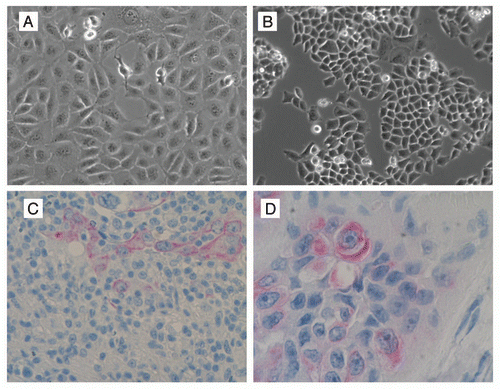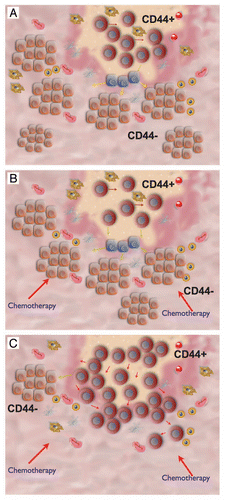Figures & data
Figure 1 Cellular morphology of ovarian cancer stem cells. Type I EOC stem cells (A) are bigger and have a higher nucleus:cytoplasm ratio compared Type II EOC cells (B); (C and D) Immunostaining of ovarian tumors with Ck18 (pink staining) shows that the morphological difference between the two cell types is maintained in patients with ovarian cancer. Ck18+ Type I EOC stem cells appear larger compared to Ck18− cells.

Figure 2 Proposed model depicting complexity of the cellular components of ovarian cancer and the role of the Type I EOC stem cells in chemoresistance and recurrence. (A) We propose that the bulk of ovarian cancer tumors arise from the CD44+ progenitor cancer cells, which have the capacity to self-renew (red arrow) and differentiate (yellow arrow); (B) chemotherapy targets only the CD44− cancer cells while CD44+ Type I EOC stem cells persist; (C) after treatment, the chemo-resistant CD44+ Type I EOC stem cells, which are capable of maintaining an inflammatory environment, rebuild the tumor mainly by self-renewal than by differentiation; thus, recurrence maybe associated with a larger pool of CD44+ Type I EOC stem cells.

Table 1 Stem cell-associated genes identified by gene expression microarray and validated by real-time PCR or western blot analysis